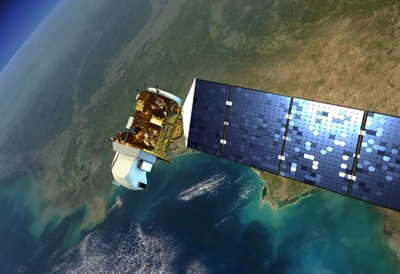Big data computing above the cloudsby Vid Beldavs
|
| A server farm at GEO can receive unmetered power from the sun 24/7 with the depths of space serving as an ultimate heat sink. |
The significantly lower cost opens opportunities for many new uses of big data as well as for a much broader range of customers that can afford to buy data that they can use at a fraction of earlier costs. ConnextX has assembly an end-to-end technology platform that can create, process, encode, encrypt, decode, transmit, receive, decode, and decrypt big data of all types. The company is developing modules for specific applications: fraud detection for the financial industry, churn for telco, product recommendations for retail, statistical process control for manufacturing, advertisement placement for marketing, and other applications.
ConnectX sees its technology as competing with emerging quantum computing solutions, but with technology that does not require basic scientific advances. The technology is an engineering solution that uses known science but with data architecture that is uniquely suited to the tasks of big data computing. The ConnectX platform is faster and more efficient at transmitting “Big Data” than known alternatives. ConnectX has also developed new techniques for data encryption that provide needed security for sensitive data. The information will be accessible anywhere through any mobile device. The company will offer a web-based service where clients can upload their data and receive back the analysis.
The ConnectX team includes spans a broad range of experience and unique knowhow and specialties – big data architectures and computer science, computer security, satellite launch and space operations. Lance Parker, the CEO, has a business and economics background, has multiple patents in mobile communications, data security and satellite systems.
Opening the power of computing in space
| Developing space-based supercomputing to serve terrestrial demand will also create the capabilities for advanced computing facilities in space that can take full advantage of the vacuum, microgravity, and abundant solar energy available in space. |
ConnectX is not the first firm to propose servers in space with the idea that energy and cooling, both of which are costly on Earth, are abundant and cheap in space. Server Sky is a concept developed by Keith Lofstrom that only anticipated server farms in space but also construction of the servers to take full advantage of the microgravity environment to reduce mass by eliminating structural supports. While Server Sky is a fascinating technical concept, ConnectX has developed a full business model that is integrated with the novel technology to provide a very promising value proposition.
Space-based supercomputing opens exciting possibilities. Why transmit terabytes of data from satellite remote sensing to Earth when those data can instead be processed in space and return only the information requested by the user? Minute changes in topography could be analyzed and immediately direct higher resolution imaging of an object of interest. Only information that is relevant would need to be transmitted to Earth. While such computer architectures can be built with constellations of small satellites, the development of such systems will drive the development of multiple technologies. Developing space-based supercomputing to serve terrestrial demand will also create the capabilities for advanced computing facilities in space that can take full advantage of the vacuum, microgravity, and abundant solar energy available in space.
